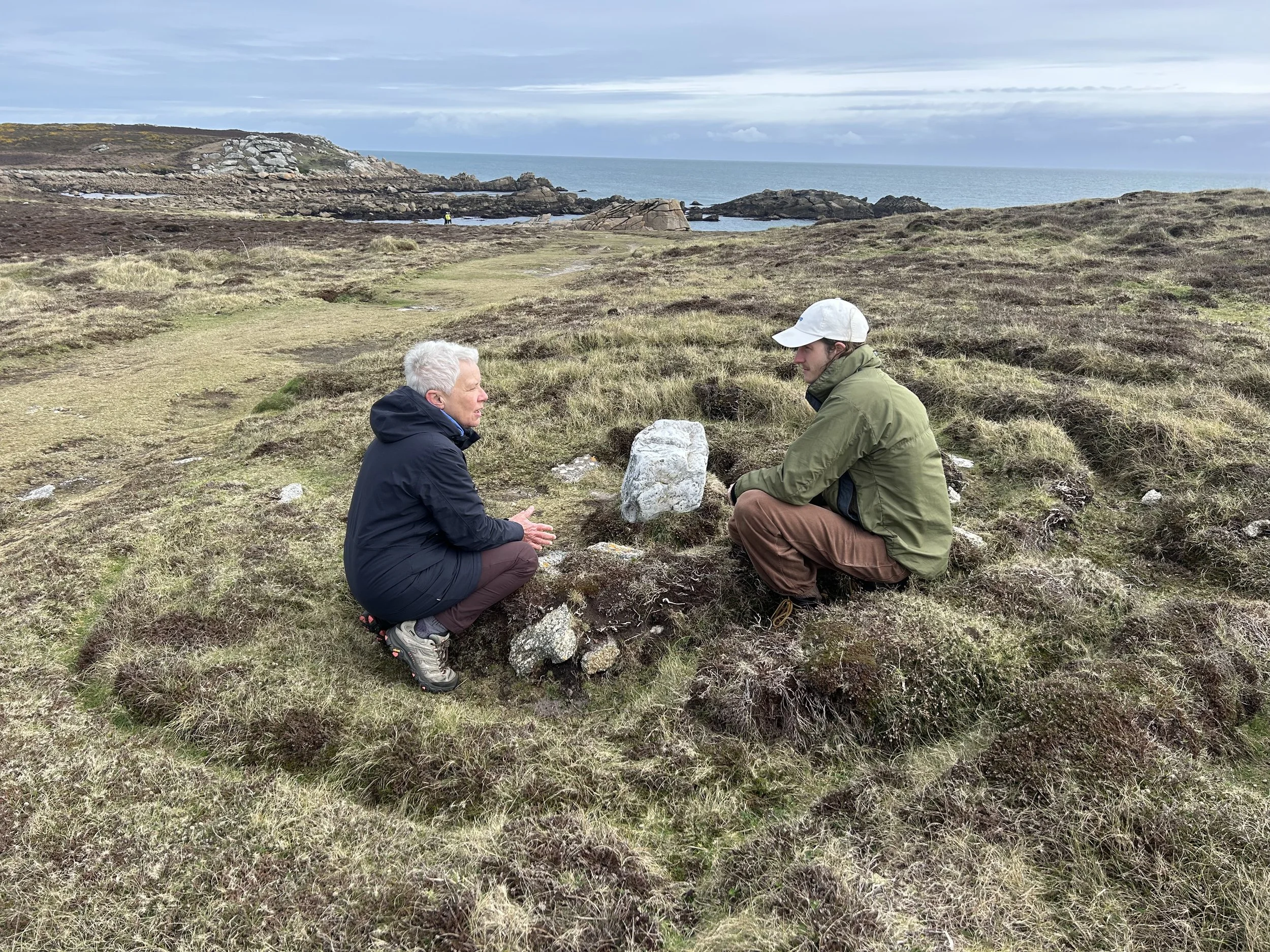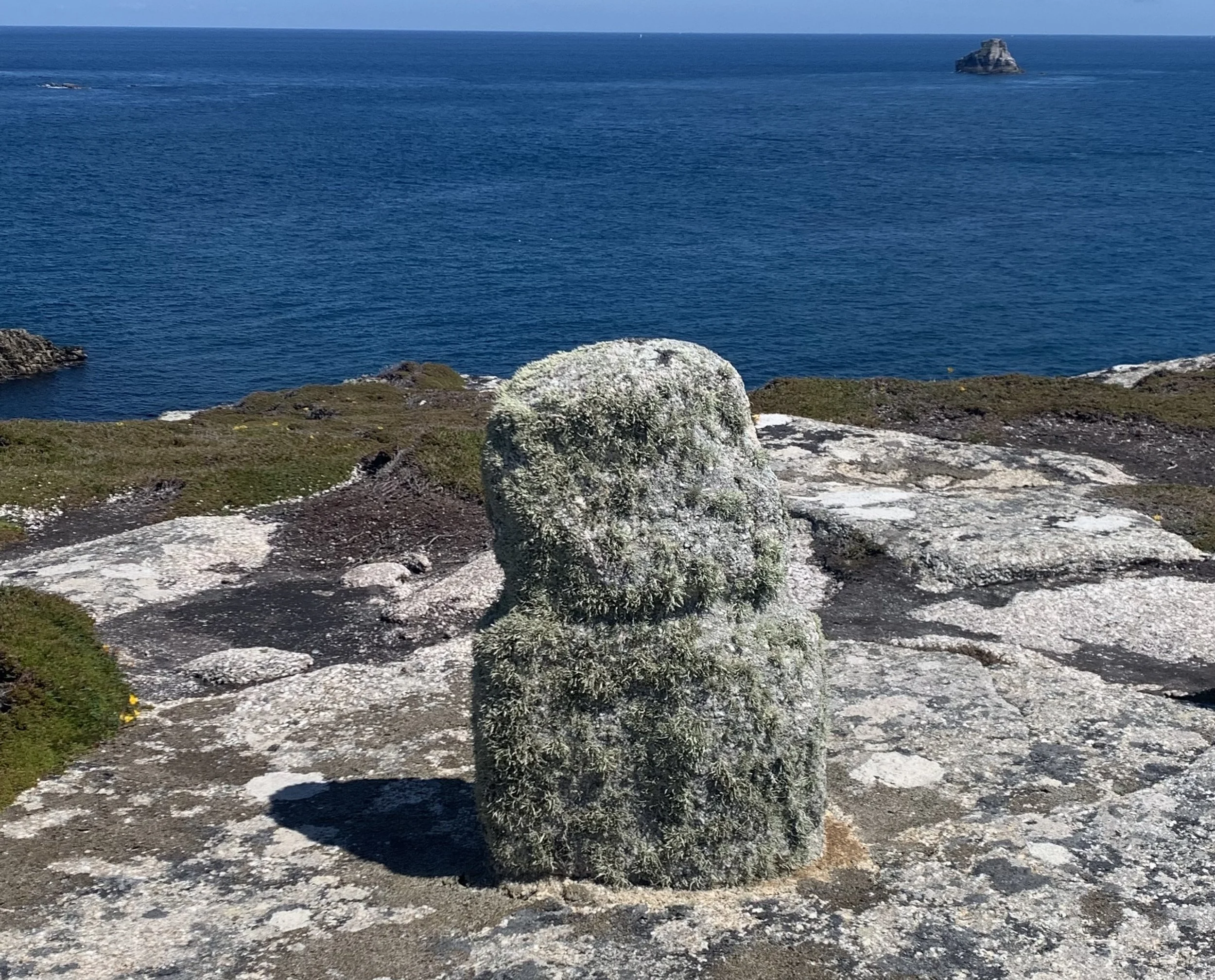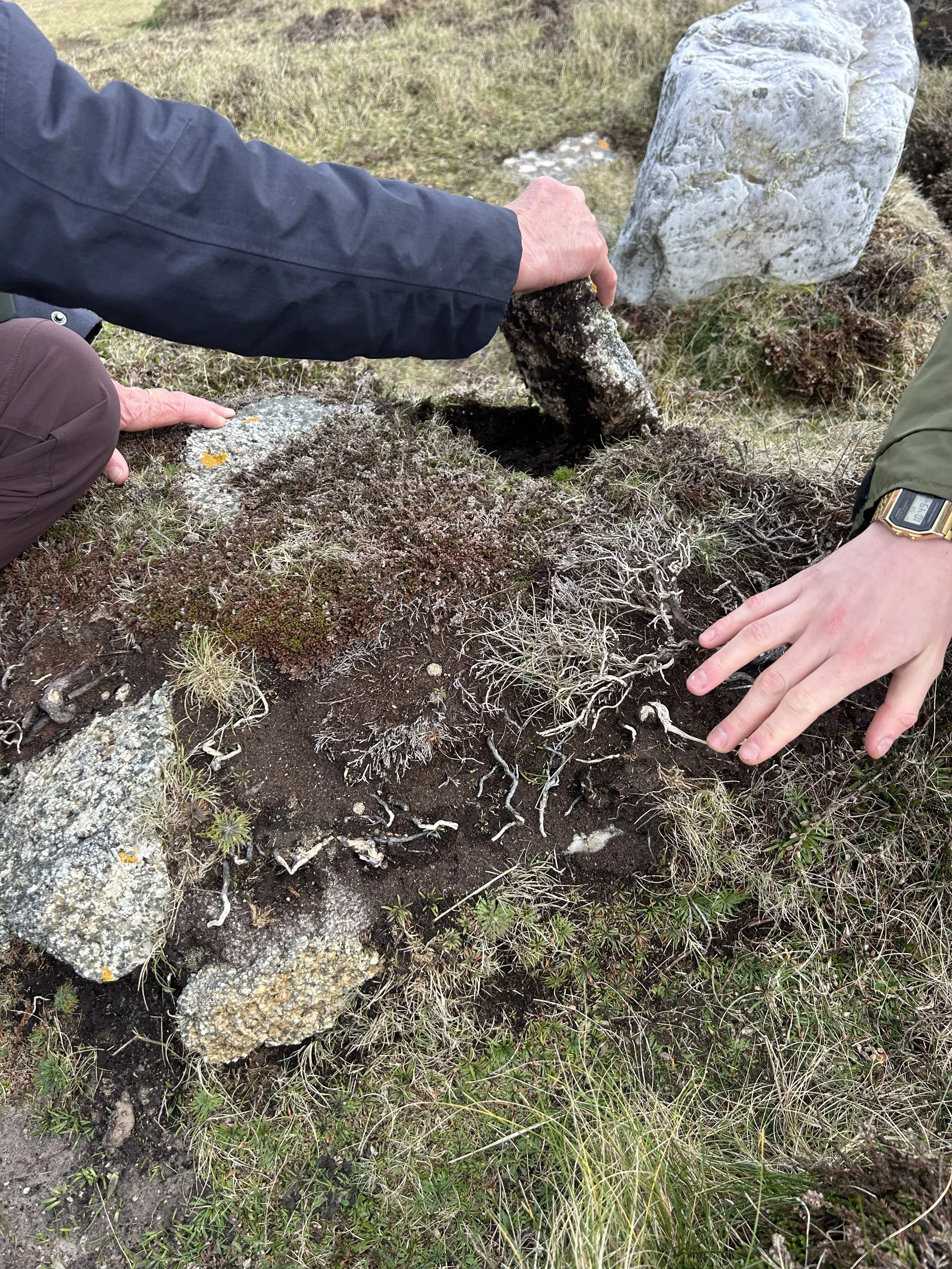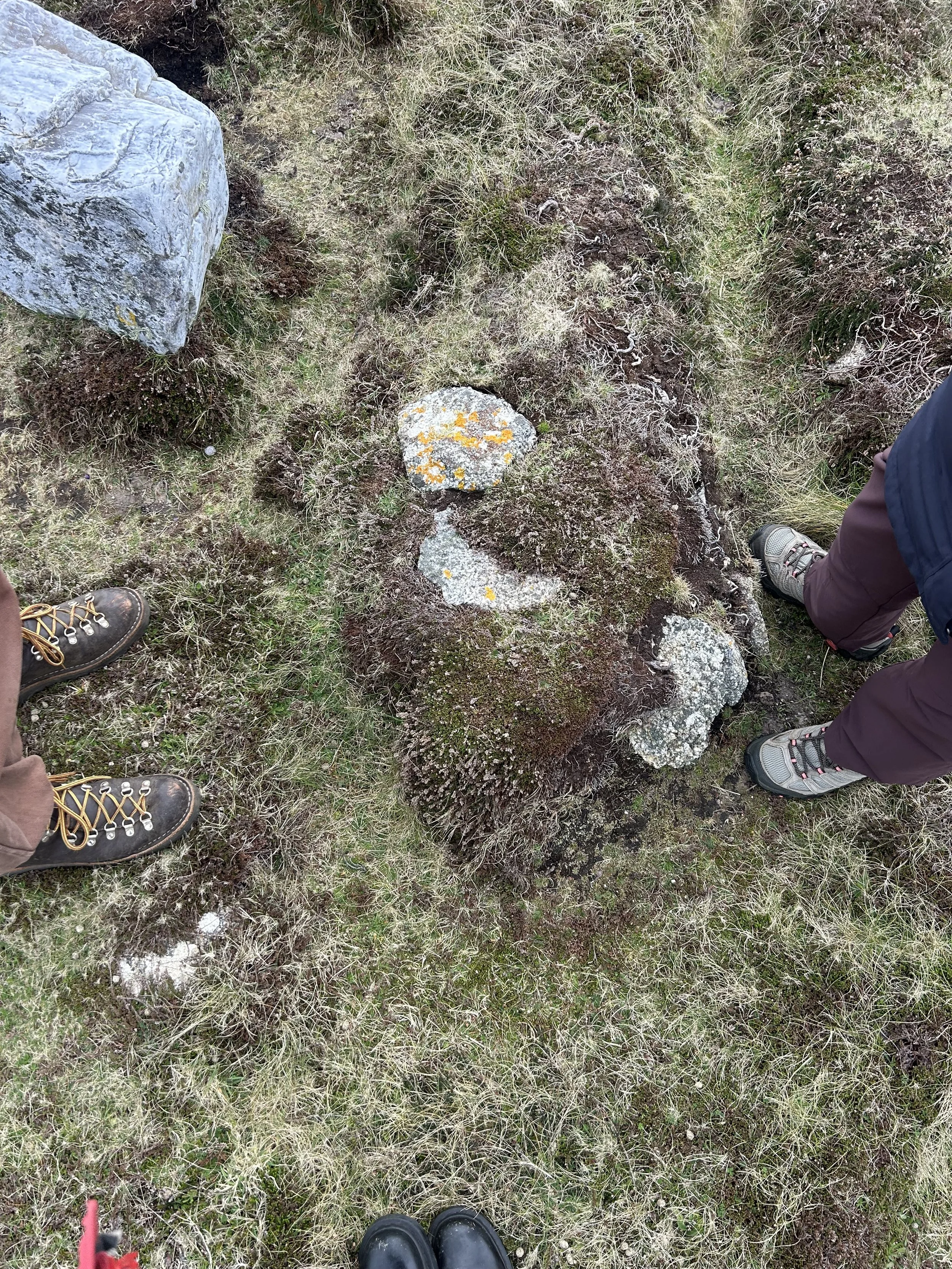Giant’s Castle Maze site visit with archaeologist Katharine Sawyer
Layan and Katharine at the Maze site
I first met Dr. Katharine Sawyer in the late summer of 2023, when I had come to Scilly for the first time. I saw a poster for a Community Archaeology Group gathering on Nornour, one of the uninhabited eastern isles. Teän had other obligations, so I went alone. We took a special boat out to the isles, and were brought ashore a few at a time on an inflatable landing craft. It was the first time I had ever set foot on an uninhabited island, and the whole experience felt almost mythical.
Katharine is Scilly’s leading archaeologist. She studied archaeology and anthropology at Cambridge, and has authored Islands of the Dead? (2015, Archaeopress Archaeology), a fascinating and detailed overview of the Bronze Age burial sites on the islands.
She also runs the Community Archaeology Group here on Scilly, who work with the Wildlife Trust to maintain some of Scilly’s important heritage sites. Much of this looks like vegetation management, and this is what we were to be doing on Nornour. Katharine explained that this tiny island, with an area of only four acres, is the site of a series of prehistoric hut buildings, some of which were re-used in later times by the Romans as a shrine to the sea-goddess Selena. The huts were exposed in the 1960’s after a powerful storm caused some of the cliffs to erode. It became apparent that there were artefacts embedded in the mud, which turned out to be such a significant find as to instigate the building of the old museum on St. Marys (but that’s another story).
“Billy Idol” an Iron Age carved “godlet” (Cheryl Straffon) on St Martin’s, possibly depicting a puffin
As we pulled armfuls of samphire out of the low stone walls, Katharine and I chatted about the ancient history of the islands. Something from that conversation that sticks in my mind is a personal theory of hers that the small Iron Age carved firgure on St. Martin’s (known affectionately as Billy Idol) is a representation, not of a human, but a puffin- a hunting totem for a community that might have relied on that animal for food, and also venerated it for generously supporting their lives.
A few months later, at another CAG meetup on St. Martin’s, Katharine mentioned that she was planning the restoration of Troy Town Maze, Scilly’s original (and possibly ancient) labyrinth. Unlike Wilkins’ restoration, this one would be carried out with the involvement of Historic England, who now take care of the site. Interestingly, she mentioned that, through her research, she had come across evidence that there may still be an ancient labyrinth underneath the visible one. The articles she sent us after this conversation sparked a whole rabbit hole of research into the history of Troy Town Maze- a subject of a future blog post.
When we began this project, we knew we would need an experienced archaeologist to supervise the restoration of Giant’s Castle Maze, and that there was no one better qualified for the job than Katharine, who generously agreed. The first step in this process was a visit to the site together, so she could take a look at it and make some reccommendations for next steps. She immediately pointed out that the Maze appeared to be made from low, dry-stone walls rather than rows of sea pebbles, making its construction unlike that of any other on Scilly. She reccomended that, in order to understand the construction of the Maze better, we should begin by clearing away the peat and heather from a couple of sections. It is important for us to understand how much stone is remaining, and to what extent that is held together by the accumulated peat- whether removing it could compromise the structure of the walls. A representative from the Wildlife trust will soon be undertaking an ecological survey of the site, in order to ensure the restoration won’t endanger any protected species. They will do this in late May, to give the flowers a chance to come up and improve accuracy of identification. We will therefore carry out these text excavations in late May.
A couple of other interesting points from our site visit- Katharine is of the opinion that the circle on Salakee Downs (which lies close to the Maze and was dowsed by Michael a few weeks ago) is at least partly deliberate and prehistoric- that modern archaeological surveys have overlooked it. Teän felt vindicated by this, as they have long since felt the site wasn’t only a natural formation. Katharine also mentioned that the reason the earth embankments of the Giant’s Castle hillfort are so difficult to see today is because they were used for machine gun target practice during the war, when there was a lookout with soldiers stationed here. Giant’s Castle began to seem to us a place marked by many layers of war and conflict- a prehistoric hillfort, overlaid by the scars of more modern conflict, crossed by energy lines relating to Athena, a goddess of, among other things, war.
Our thanks to Katharine for her invaluable time and expertise.




